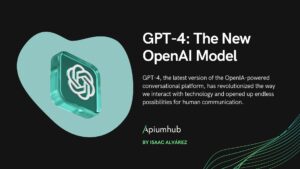Table of Contents
Environment drift becomes an expensive business waste. Bugs and failures happen because teams build against a staging or development environment and then find upon deployment that the production environment is out of sync, which leads to a time-consuming investigation of why and what is missing. Therefore today I would like to discuss Infrastructure as code and it’s benefits.
Infrastructure as Code evolved to solve the problem of environment drift in the release pipeline. The idea of Infrastructure as Code (IaC) was spurred on by the success of CI/CD. Infrastructure as Code (IaC) automates the provisioning of infrastructure, enabling your organization to develop, deploy, and scale cloud applications with greater speed, less risk, and reduced cost.
What is Infrastructure as Code?
IaC is the process of managing and provisioning computer data centers through machine-readable definition files, rather than physical hardware configuration or interactive configuration tools. In simple words, IaC is the process of replacing manual effort required for IT resource management and provisioning by simple lines of code.
Infrastructure as Code (or IaC) is an automated type of infrastructure management.
Most typically, the Infrastructure as Code procedure involves the following 3 steps:
- The devs define and write the infrastructure specs in a language that is domain-specific
- The files that are created are then sent either to a management API, master server, or a code repository
- The platform then takes all the necessary actions to create and configure the computing resources
IaC is also an essential DevOps practice, indispensable to a competitively paced software delivery lifecycle. It enables DevOps teams rapidly create and version infrastructure in the same way they version source code and to track these versions so as to avoid inconsistency among IT environments that can lead to serious issues during deployment. IaC is a key DevOps practice and is used in conjunction with continuous delivery.
There are generally two approaches to IaC: declarative (functional) vs. imperative (procedural). The difference between the declarative and the imperative approach is essentially ‘what’ versus ‘how’ . The declarative approach focuses on what the eventual target configuration should be; the imperative focuses on how the infrastructure is to be changed to meet this.
The declarative approach defines the desired state and the system executes what needs to happen to achieve that desired state. Imperative defines specific commands that need to be executed in the appropriate order to end with the desired conclusion.
There are two methods of IaC: ‘push’ and ‘pull’ . The main difference is the manner in which the servers are told how to be configured. In the pull method the server to be configured will pull its configuration from the controlling server. In the push method the controlling server pushes the configuration to the destination system.
Infrastructure as Code benefits
- Cost reduction
By removing the manual component, people are able to refocus their efforts towards other tasks.
- Speed
IaC allows faster execution when configuring infrastructure and aims at providing visibility to help other teams across the enterprise work quickly and more efficiently.
- Reduced risk
Automation removes the risk associated with human error, like manual misconfiguration; removing this can decrease downtime and increase reliability.
- Test
Infrastructure as Code enables DevOps teams to test applications in production-like environments early in the development cycle.
- Stable and scalable environments
IaC delivers stable environments rapidly and at scale. Teams avoid manual configuration of environments and enforce consistency by representing the desired state of their environments via code. Infrastructure deployments with IaC are repeatable and prevent runtime issues caused by configuration drift or missing dependencies. DevOps teams can work together with a unified set of practices and tools to deliver applications and their supporting infrastructure rapidly, reliably, and at scale.
- Accountability
Since you can version IaC configuration files like any source code file, you have full traceability of the changes each configuration suffered.
- Configuration consistency
IaC completely standardizes the setup of infrastructure so there is reduced possibility of any errors or deviations. This will decrease the chances of any incompatibility issues with your infrastructure and help your applications run more smoothly.
- Documentation
Not only does IaC automate the process, but it also serves as a form of documentation of the proper way to instantiate infrastructure and insurance in the case where employees leave your company with institutional knowledge. Because code can be version-controlled, IaC allows every change to your server configuration to be documented, logged, and tracked. And these configurations can be tested, just like code.
- Enhanced security
If all compute, storage, and networking services are provisioned with code, then they are deployed the same way every time. This means that security standards can be easily and consistently deployed across company without having to have a security gatekeeper review and approve every change.
Infrastructure as Code tools
There are many tools that can help you automate your infrastructure, but let’s look at the most popular and successful ones:
- Terraform is a declarative provisioning and infrastructure orchestration tool that lets engineers automate provisioning of all aspects of their enterprise cloud-based and on-premises infrastructure. ( you can read more about it in our previous post about Terraform )
- Chef is one of the most popular configuration management tools that organizations use in their continuous integration and delivery processes. Chef is cloud-agnostic and works with many cloud service providers such as AWS, Microsoft Azure, Google Cloud Platform, OpenStack, and more.
- Puppet is another popular configuration management tool that helps engineers continuously deliver software. Using Puppet, you can define the desired end state of your infrastructure and exactly what you want it to do. Then Puppet automatically enforces the desired state and fixes any incorrect changes. Puppet integrates with the leading cloud providers like AWS, Azure, Google Cloud, and VMware, allowing you to automate across multiple clouds.
- Ansible is an infrastructure automation tool created by Red Hat. Ansible models your infrastructure by describing how your components and system relate to one another, as opposed to managing systems independently.
Infrastructure as Code can simplify and accelerate your infrastructure provisioning process, help you avoid mistakes and comply with policies, keep your environments consistent, and save your company a lot of time and money.
Author
-
Ekaterina Novoseltseva is an experienced CMO and Board Director. Professor in prestigious Business Schools in Barcelona. Teaching about digital business design. Right now Ekaterina is a CMO at Apiumhub - software development hub based in Barcelona and organiser of Global Software Architecture Summit. Ekaterina is proud of having done software projects for companies like Tous, Inditex, Mango, Etnia, Adidas and many others. Ekaterina was taking active part in the Apiumhub office opening in Paseo de Gracia and in helping companies like Bitpanda open their tech hubs in Barcelona.
View all posts









